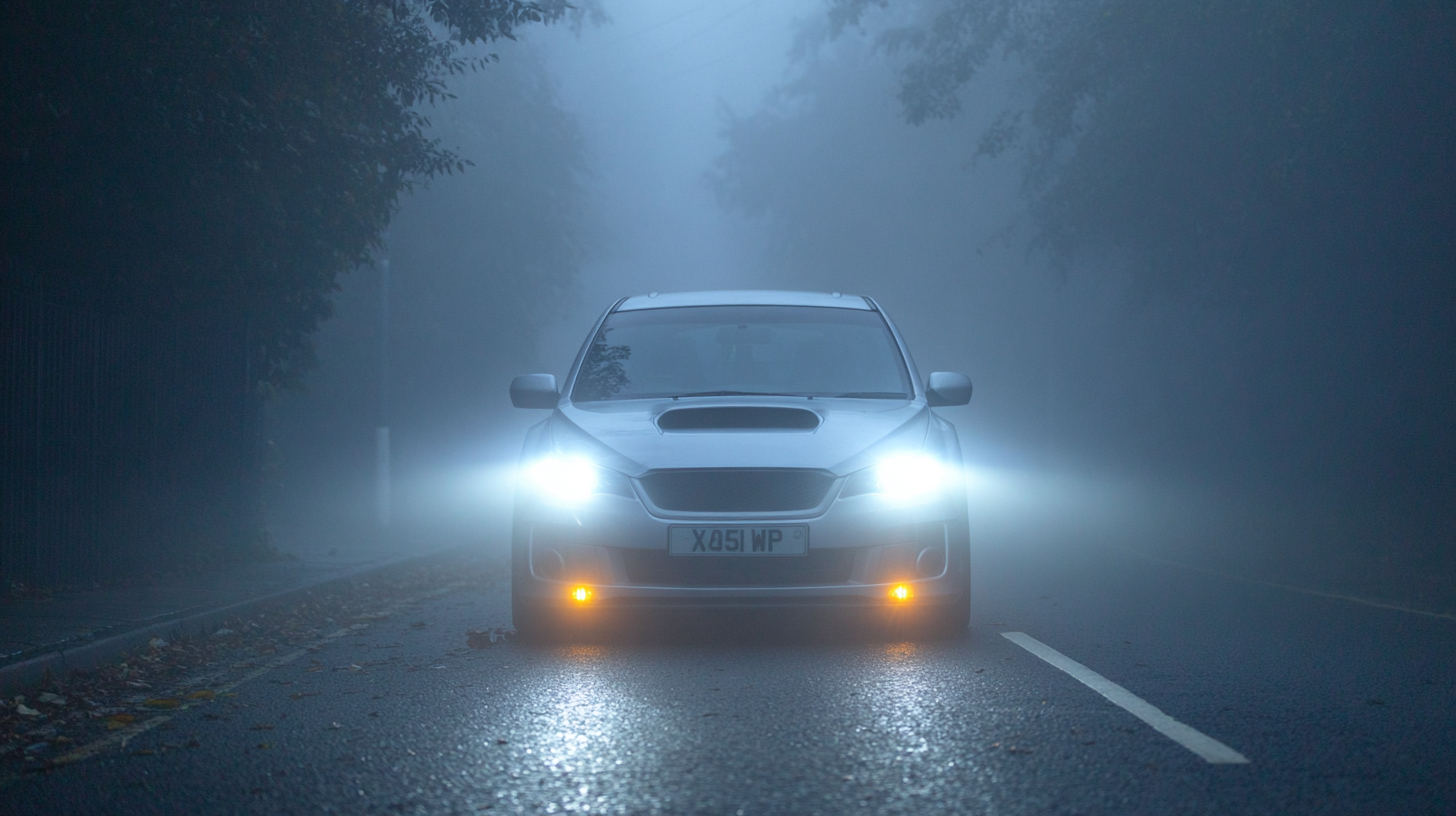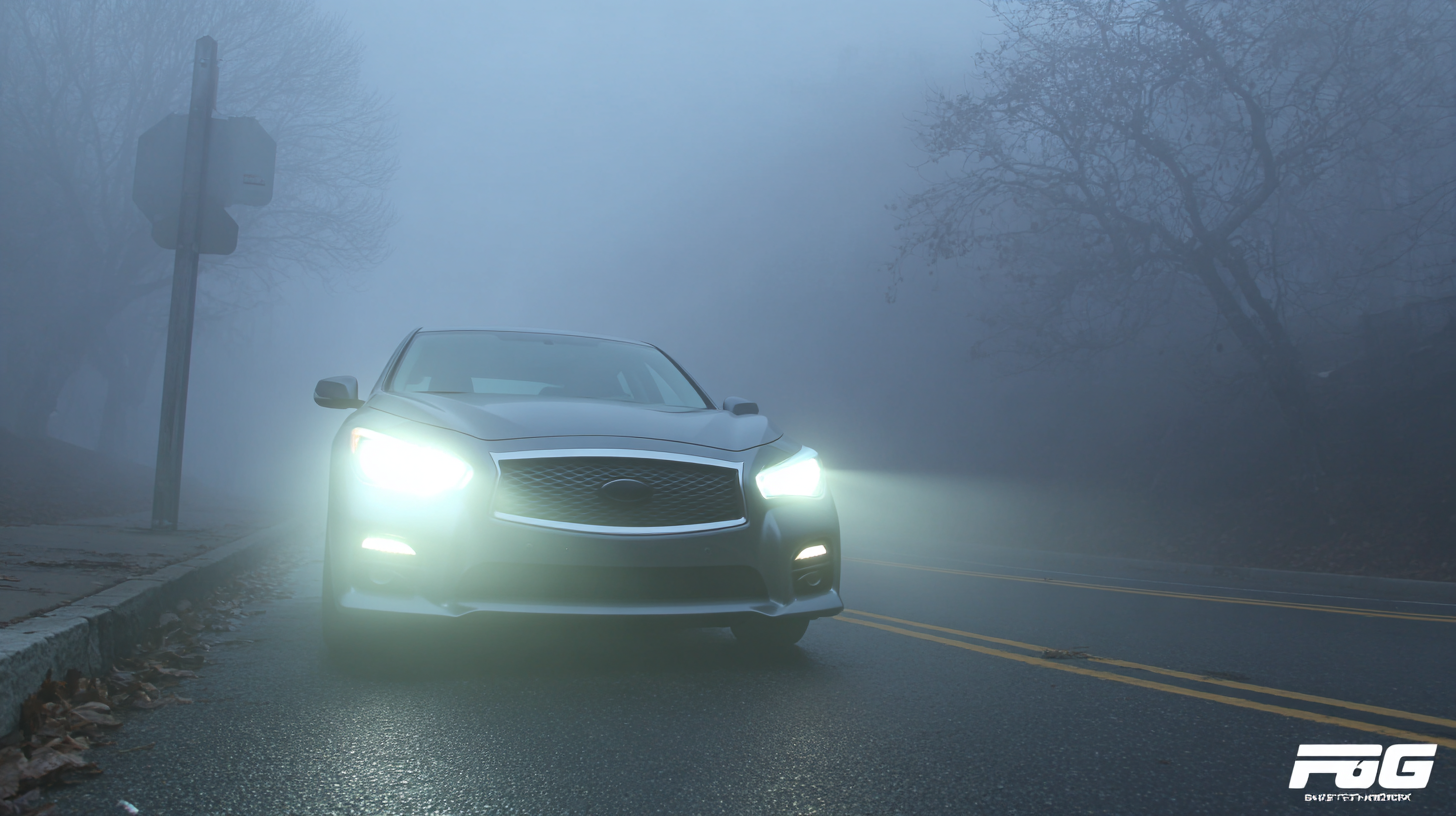In the realm of automotive safety, the choice of fog lights plays a crucial role in enhancing visibility during adverse weather conditions. According to a report by the National Highway Traffic Safety Administration (NHTSA), nearly 20% of all vehicle crashes occur in fog, rain, or snow, underscoring the importance of proper lighting systems for drivers.

Fog lights are specifically designed to illuminate the road more effectively in low-visibility scenarios, cutting through fog and reducing glare. With advancements in technology, including LEDs and adaptive lighting systems, selecting the right fog lights can significantly impact not only safety but also driving comfort. Understanding the various features and specifications of fog lights will enable drivers to make informed decisions, ensuring optimal visibility when it matters most.
Driving in foggy conditions can be incredibly challenging and even hazardous. With recent fog warnings issued across parts of England and Wales, understanding the importance of fog lights has never been more critical for safe driving. Fog lights are designed to provide better visibility in low-visibility conditions, illuminating the road immediately ahead without causing glare for other drivers. Proper use of fog lights can significantly enhance your ability to see and be seen, reducing the risk of accidents.
When driving in fog, it's essential to remember a few key tips. First, always use your fog lights in dense fog but switch them off when visibility improves. Second, keep a safe distance from the vehicle ahead, as stopping distances can be longer in reduced visibility. Third, maintain a slower speed, allowing more time to react to sudden changes in traffic or road conditions caused by fog. Being prepared and using fog lights appropriately can help ensure safer navigation through foggy conditions.
When it comes to choosing the best fog lights for optimal visibility, several key factors should shape your decision. First and foremost is brightness. Fog lights are specifically designed to cut through thick mist and rain, so selecting a bulb with sufficient lumens is essential. A higher lumen output generally means better visibility, but it’s important to strike a balance as overly bright lights can create glare, diminishing visibility for both you and oncoming drivers.
The beam pattern is another crucial element in your selection process. Fog lights typically emit a low, wide beam that spreads light evenly across the road, illuminating the area immediately in front of your vehicle without reflecting back off the fog or rain. Look for options with a well-defined cutoff to prevent glaring into the eyes of oncoming traffic.
Additionally, consider the color of the light; yellow or amber fog lights can be effective at cutting through fog and rain better than standard white lights, as they tend to scatter less and provide improved contrast in poor weather conditions. Taking these factors into account will help ensure that you choose the right fog lights for any driving situation.
When it comes to enhancing visibility during adverse weather conditions, fog lights play a crucial role. Two popular options on the market are halogen and LED fog lights, each with distinct characteristics that impact their performance. Halogen fog lights have been a traditional choice due to their warm color temperature and lower initial cost. They emit a yellowish light that is effective in penetrating fog, rain, and snow, providing a clearer view of the road ahead. However, halogen bulbs have a shorter lifespan and are less energy-efficient, which can be a drawback for those looking for long-term solutions.
On the other hand, LED fog lights are gaining traction for their brightness and energy efficiency. With a cooler color temperature, LEDs emit a much brighter, whiter light that can cut through fog more effectively than halogens. Additionally, they have a significantly longer lifespan, reducing the need for frequent replacements, and they consume less power, making them a sustainable choice. However, their initial cost can be higher, which may discourage some buyers. Ultimately, the choice between halogen and LED fog lights depends on individual preferences, budget, and the specific driving conditions one encounters.
| Feature | Halogen Fog Lights | LED Fog Lights |
|---|---|---|
| Brightness (Lumens) | 1000 - 1500 | 2000 - 3000 |
| Lifespan (Hours) | 500 - 1000 | 25000 - 50000 |
| Heat Generation | High | Low |
| Energy Efficiency | Moderate | High |
| Lighting Color | Warm Yellow | Cool White |
| Price Range | $20 - $60 | $50 - $150 |
When installing fog lights, it is crucial to adhere to industry standards and regulations to ensure compliance and safety on the road. The Society of Automotive Engineers (SAE) recommends that fog lights be installed at a height of 12 to 30 inches from the ground, ensuring that their beam patterns are focused properly to minimize glare for oncoming drivers. According to the National Highway Traffic Safety Administration (NHTSA), improper fog light installation may not only compromise visibility but also contribute to accidents, as misguided beams can lead to visual distortion, especially in adverse weather conditions.
Moreover, fog light brightness is another critical factor governed by regulations set forth in the Federal Motor Vehicle Safety Standards (FMVSS). The maximum allowable lumen output for fog lights is 1,200 lumens, with a spacing requirement of 22 inches apart to optimize light spread without blinding other road users. Additionally, the color temperature of fog lights should ideally be between 3000K and 6000K, as studies indicate that yellowish light (3000K) better penetrates fog, rain, and snow, reducing scattering and enhancing visibility. By adhering to these standards, drivers can improve their safety and that of others when facing challenging driving conditions.

When visibility is compromised by fog, properly installed fog lights can significantly enhance safety on the road. Statistics indicate that vehicles equipped with suitable fog lights are involved in fewer accidents during low-visibility conditions. A study conducted by the National Highway Traffic Safety Administration highlights that the use of fog lights can reduce collision rates by up to 30%. This figure underscores the importance of choosing the right fog lights, not just for improved visibility but also for contributing to overall road safety.
Moreover, fog lights are designed to emit a wide, low beam that cuts through fog, rain, and snow, helping drivers to see the road more clearly while making their vehicle more visible to others. In jurisdictions where fog lights are installed correctly and used appropriately, the data suggests a noticeable decrease in the number of traffic incidents caused by adverse weather conditions. Therefore, investing in high-quality fog lights can have a real-world impact, potentially saving lives and preventing serious accidents during foggy weather.

